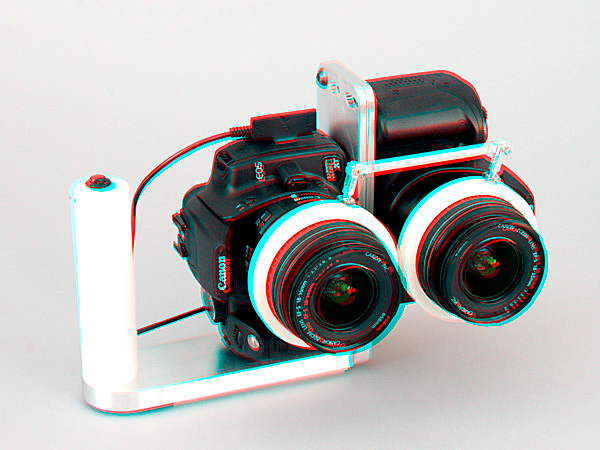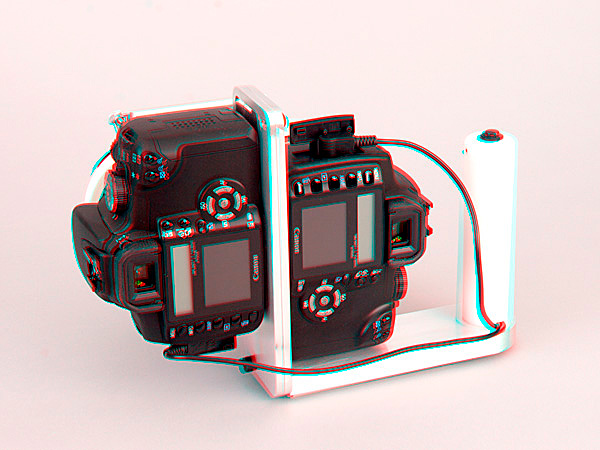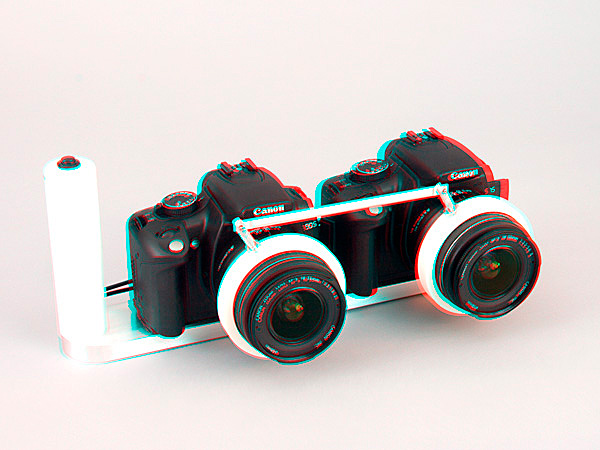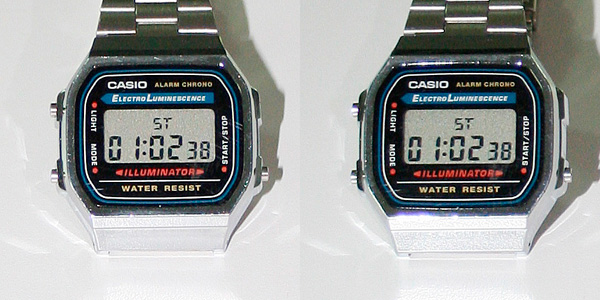|
DIGITAL SLR STEREO RIG |
|
This is a joint project made by Greg Marshall and Shab Levy. We bought 4 identical Canon EOS 350D digital SLR cameras and made two identical stereo rigs. Most of the functions of both cameras are controlled by the dual action switch on the top of the white handle. The zoom is mechanically controlled and the focus is individually controlled on automatic mode by each camera. The electronics that simultaneously control both cameras are located inside the white handle. Control is done via the wired remote control port. The special bracket is made of aluminum and the handle and pressure fitted rings around the lens barrels are made of Delrin. A standard 1/4" threaded opening for attachment to a tripod is on the bottom of the bracket base. Most pictures below are anaglyphs. |
 |
|
In this base-to-base camera configuration, the stereo base is 87mm. For comparison, the stereo base of the RBT film camera is 75mm and the stereo base of a Realist camera is 70mm. |
 |
|
The back of the rig. Notice that each camera is independently secured to its own plate. The plate for the right camera is permanently attached to the base of the bracket and the plate for the left camera is attached to the base and the right plate with two easy to remove bolts. |
 |
|
Each plate has an opening allowing the easy removal of the battery from the battery compartment. By having each camera attached firmly to each plate, the vertical adjustment is kept intact. The left camera in the above picture is propped up for the purpose of taking this photo. |
 |
|
This is a side-by-side configuration. The only different parts used here are a longer aluminum base and a longer mechanical linkage to synchronize the zoom function. The same white handle as in the above configuration has been transported to this rig. The stereo base in this configuration is 138mm which provides a medium range hyper stereo base. A standard 1/4" threaded opening for attachment to a tripod is on the bottom of the bracket base. |
 |
|
An electronic delay box. While the cameras in the above rigs, including the flashes are very well synchronized without the need for complicated electronics, this optional time delay box provides a perfect flash synchronization. It is used in-line and can be attached to the port between each camera and the dual function button on the white handle. The box works by allowing the two cameras to complete the internal electronic protocol safely before the flash is activated and can work with either internal or external flash. The delay is 4ms, but it doesn't matter at all since both left and right images are exposed to the light from the flash at the same time. |
 |
|
The picture above shows how well the on-board flash is synchronized without the delay box. The watch is set as a stop watch and the sync is within 100th of a second. |
 |
|
When attaching the hot shoe of one of the cameras to a studio strobe an excellent sync is maintained as well. |
| SEE SOME SAMPLE PHOTOS |
| Back to Stereoscopic Photography |